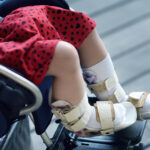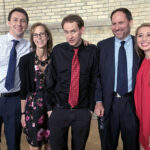The journey to a treatment for hereditary spastic paraplegia
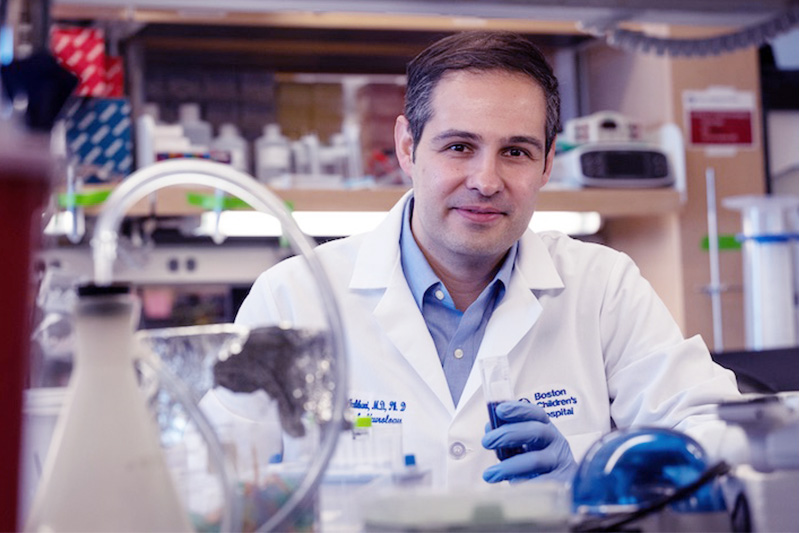
In 2016, Darius Ebrahimi-Fakhari, MD, PhD, a neurology fellow at Boston Children’s Hospital, met two little girls with spasticity and decreased muscle tone in their legs, which affected their walking. Both girls, Robbie Edwards and Molly Duffy, had been diagnosed with hereditary spastic paraplegia (HSP), a group of more than 80 genetic conditions. Untreated, the spasticity and weakness slowly progress, often requiring a wheelchair by age 10, and are often accompanied by global developmental delays and seizures.
Robbie and Molly had the same rare subtype of HSP, caused by mutations in the gene for HSP type 47, or SPG47. The only other cases of SPG47 then known were from four families in the Middle East. Aside from interventions like occupational, physical, and speech therapy, there were no treatments.
“There were no research or clinical trials looking to treat SPG47,” says Robbie’s mother, Kasey Edwards, who had formed a nonprofit together with the Duffy family. “It became clear that we would need to initiate research ourselves.”
The Translational Neuroscience Center at Boston Children’s asked Ebrahimi-Fakhari to investigate the root cause of SPG47 and perhaps find a treatment. As a PhD student, he had studied autophagy, a cellular recycling process that’s known to be disrupted by mutations in the SPG47 gene.
Eight years later, Ebrahimi-Fakhari’s lab has found a potential drug that may work for several subtypes of HSP, including SPG47. Several gene therapies are also in clinical development for other subtypes.
Kick-starting HSP research
Early on, Edwards and her husband spent hours poring over research articles, trying to learn as much as possible. “I bought Genetics for Dummies, Neuropsychiatry for Dummies, Neurology for Dummies,” Edwards says. “I was going down rabbit holes.”
They began contacting the authors of some of the articles as well as labs and biotech companies. In 2017, the nonprofit convened an international meeting of scientists and physicians working on HSP, held at Boston Children’s.
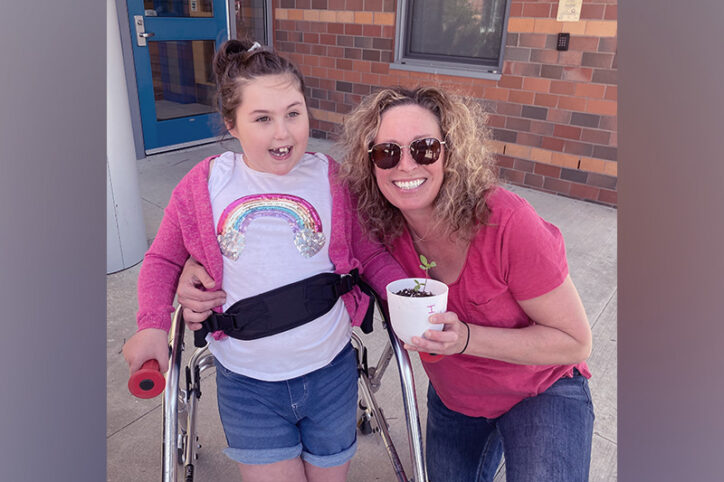
“We decided that in order to tackle this disease, we needed first to find more patients,” says Ebrahimi-Fakhari.
He started by sending 500 emails to his colleagues and others around the world, asking whether anyone had seen a patient with SPG47. Today, Boston Children’s runs the first and only longitudinal natural history study for childhood-onset HSP, a registry with nearly 600 patients, including about 100 with SPG47.
SPG47 is now part of a subtype of HSP known as AP-4 HSP — which the team first described in detail in 2020 — together with the related conditions SPG50, SPG51, and SPG52. Boston Children’s soon launched the HSP Genomic Sequencing Initiative, which has now expanded into a national network of centers dedicated to the clinical care of and research for HSP: The Spastic Paraplegia Centers of Excellence Research Network (SP-CERN).
Expanding the HSP registry
The registry continues to grow. Edwards helped add an important group of patients: Noting that some people with HSP have family members diagnosed with cerebral palsy, she connected Ebrahimi-Fakhari and his colleagues with the International Cerebral Palsy Genetics Consortium. Subsequently, Siddharth Srivastava, MD, and Maya Chopra, MBBS, FRACP, at Boston Children’s launched a genetic study of patients with a cerebral palsy diagnosis.
While CP is often attributed to birth trauma, the study found that one in four patients had an underlying genetic diagnosis — often, an HSP-related mutation.
“Our goal is to include AP-4 genes in genetic testing for children presumed to have cerebral palsy,” says Ebrahimi-Fakhari. “Unless the child has an affected sibling, the typical patient journey is three to four years to a diagnosis.”
The next challenge was to develop a treatment.
Fixing a stuck protein
Ebrahimi-Fakhari’s lab, with Mustafa Sahin, MD, PhD, and others, had discovered that AP-4 HSP is caused by a deficiency in AP-4, a complex of four molecules that help transport a protein important to neurologic function within the cell. This protein, ATG9A, is involved in autophagy, enabling neurons to break down and reuse old cell parts.
Each form of AP-4 HSP is caused by a mutation in one of AP-4’s four components, disabling the complex. As a result, ATG9A gets stuck and accumulates in the wrong place.
“This is apparent on microscopy,” says Ebrahimi-Fakhari. “It’s a black-and-white sort of difference.”
Early efforts focused on developing gene therapies. One therapy, correcting the SPG50 gene, also supported by the Boston Children’s team, is now in a clinical trial sponsored by the UT Southwestern Medical Center. A second, aimed at correcting SPG47, will be submitted for a clinical trial to be sponsored by Boston Children’s.
Ebrahimi-Fakhari, however, wanted a treatment that would be accessible to a larger number of children, possibly an oral medication. Through Boston Children’s Technology and Innovation Office, his lab partnered with Astellas Pharma, Inc.

As described recently in Nature Communications, the team tested about 29,000 compounds in skin cells or stem-cell-derived neurons made from patients with AP-4 HSP. Using imaging, they could spot which cells were being fixed, Ebrahimi-Fakhari says.
“We asked: What molecule can get these stuck proteins to the place they need to be?”
Moving toward treatment
From an initial group of 16 compounds that restored proper transport of ATG9A, one compound dubbed BCH-HSP-C0-1 made it through additional testing, including tests to ensure it works in neurons made from children with SPG47.
“This small molecule works for all four subtypes of AP-4 HSP, a key advantage over gene therapies, which correct one subtype at a time,” notes Ebrahimi-Fakhari. “Now, we need to see if it works in a live mouse model.”
If it does, the next step would be to apply to the FDA to do a clinical trial. While some symptoms of AP-4 HSP, like spasticity, are likely irreversible, Ebrahimi-Fakhari thinks there’s a possibility that restoring ATG9A transport could prevent disease progression.
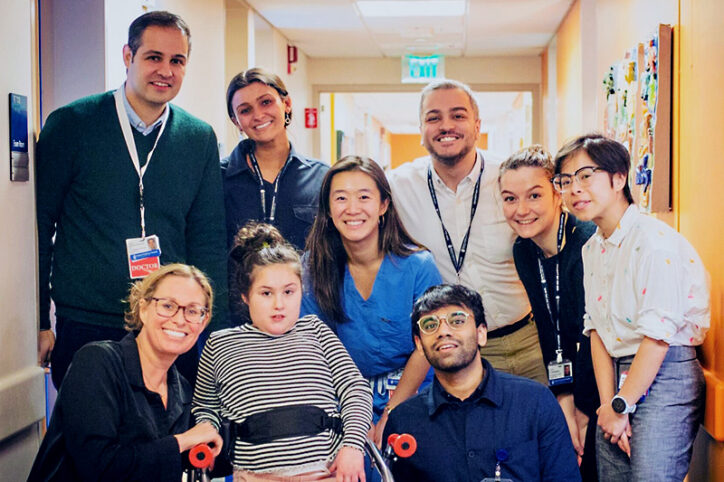
Edwards is excited about these new developments.
“To have a compound identified that might address the symptoms is a potential dream come true,” says Edwards. She hopes Robbie, now a sassy, sociable 10-year-old who loves music and playing UNO, would be able to participate in the trial.
“Darius and his colleagues have been so kind and patient in allowing me to ask questions and bounce off ideas and build my knowledge base,” she says. “If they hadn’t, I might not have tried to learn as much as I have.”
For inquiries about the technology, contact Sabrina Kamran, PhD, at the Technology and Innovation Development Office.
Learn more about the HSP Sequencing initiative and the SP/CERN network.
Related Posts :
-

Research offers guidance on genetic testing for cerebral palsy
A recent meta-analysis confirms what a small study at Boston Children’s found last year: About 1 in 4 children with cerebral ...
-

Rethinking the origins of cerebral palsy
Cerebral palsy (CP) has widely been viewed as the result of perinatal oxygen deprivation or other birth-related factors like prematurity. ...
-

Conquering a rare metabolic condition: A family, a pediatrician, and two labs join forces
As a newborn, Sam Hoffman never cried or made a sound. His mother, Carolyn, often had to wake him up ...
-

When diagnosis is just the first step: The Brain Gene Registry
Through advances in genetic sequencing, many children with rare, unidentified neurodevelopmental disorders are finally having their mysteries solved. But are ...


